In pictures: India's dying telegram service
- Published
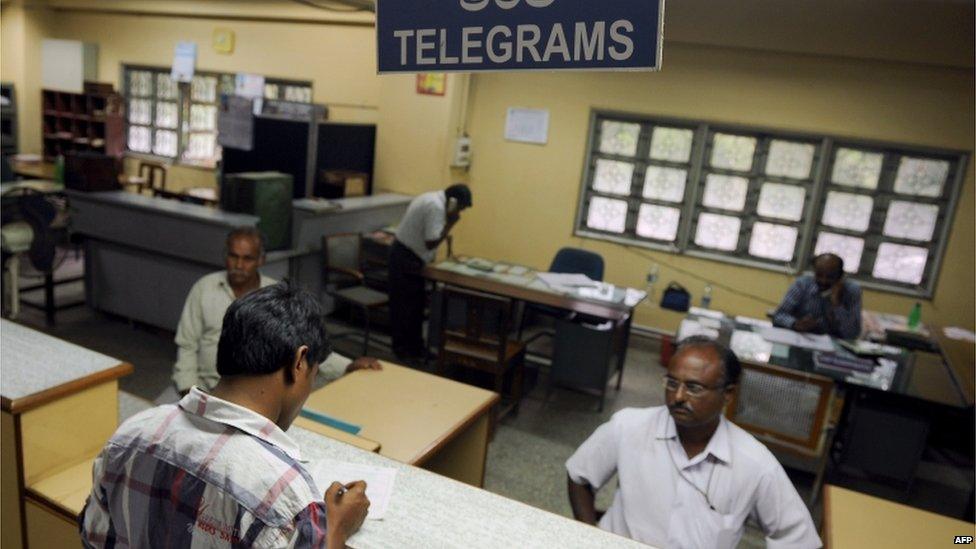
India's 160-year old telegram service will be discontinued on 15 July because of falling business. Telegrams were a popular and quick way of communication before phone services improved and became cheaper and mobile phones revolutionised communication in the country.
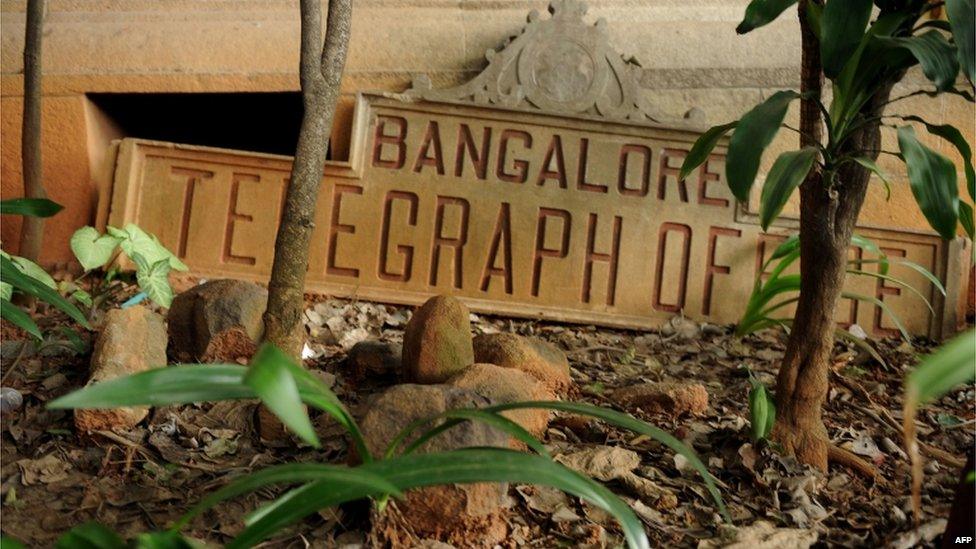
Today there are around 75 state-run telegram centres in India employing some 1,000 people. Many of them are in a dilapidated condition.
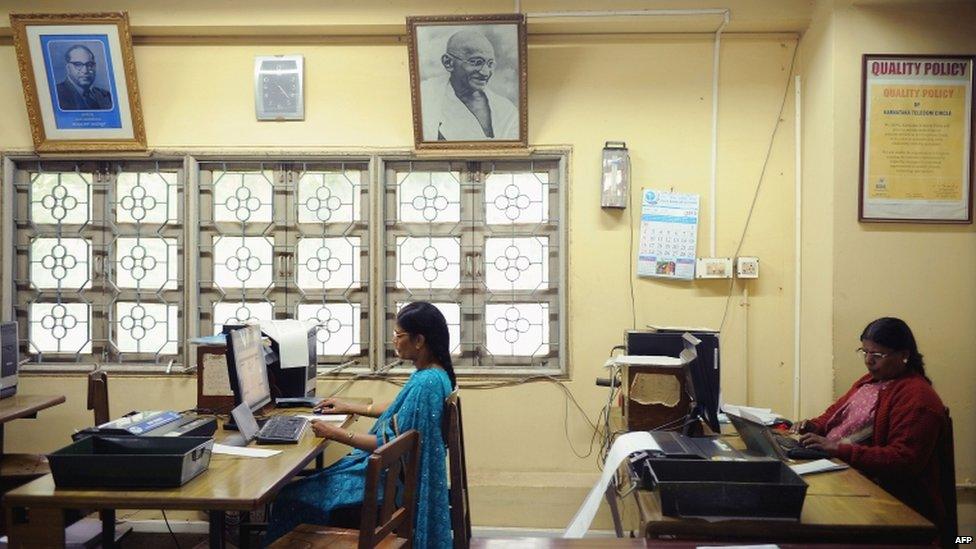
Officials say only around 5,000 telegrams are sent every day from the centres. Most are sent by government departments, businessmen and others to inform relatives of a death in the family, officials say.
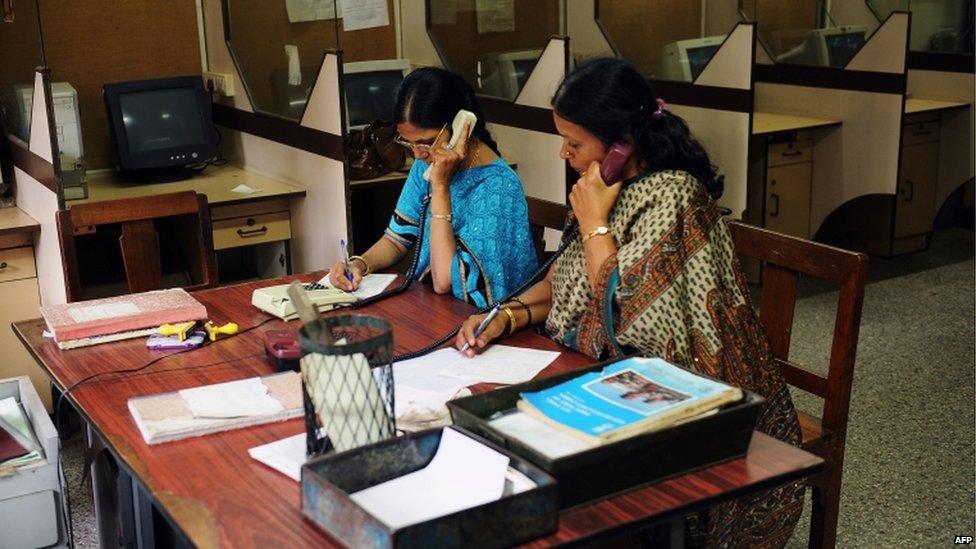
Until the mid 1990s journalists would sometimes send in their reports from the field on telegrams. One newspaper editor remembered that one of his stories sent by telegram ran into "22 sheets of paper with many undecipherable words and took three hours to retype" on the editorial desk.
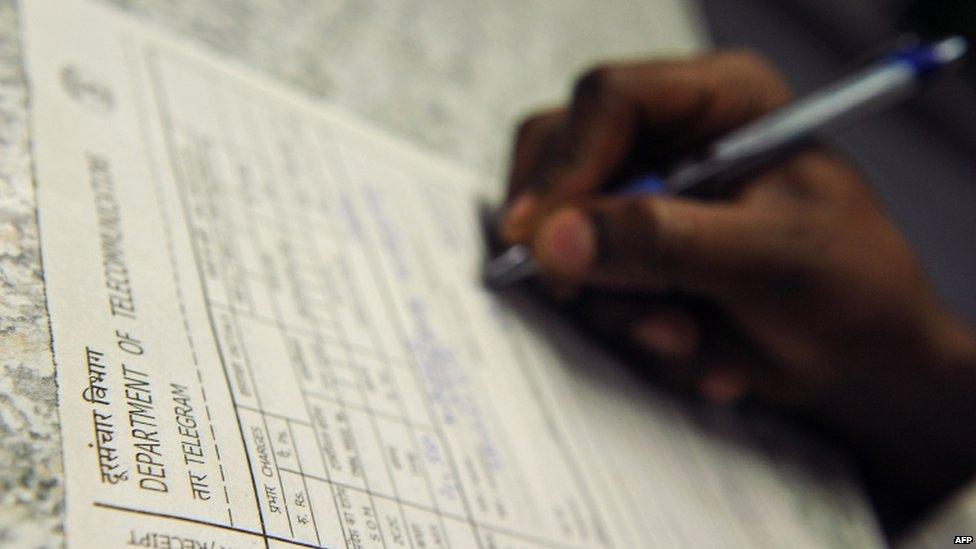
In 2011, the government raised domestic telegram charges for the first time in 60 years. Today, a customer has to pay 27 rupees (46 cents) per 50 words.
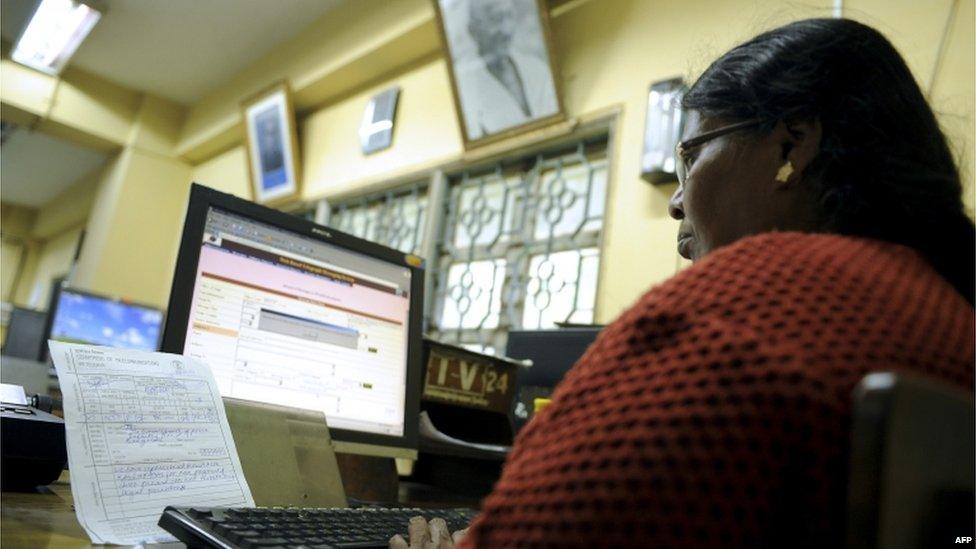
The services were also modernised: messages are now fed into a computer and the telegrams are computer generated messages which are delivered by postmen in the cities and villages.
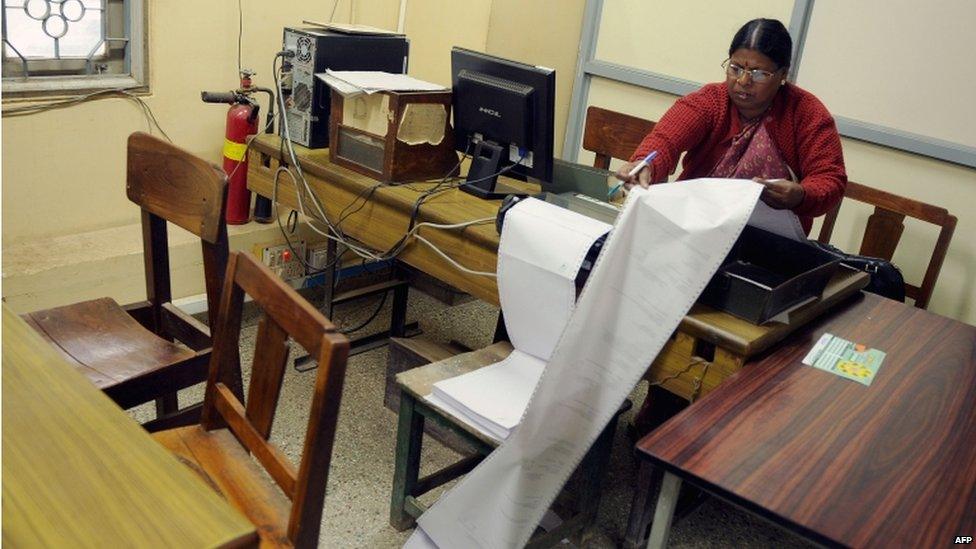
A telegram office worker looks at incoming telegraphs being printed on a sheet of paper.
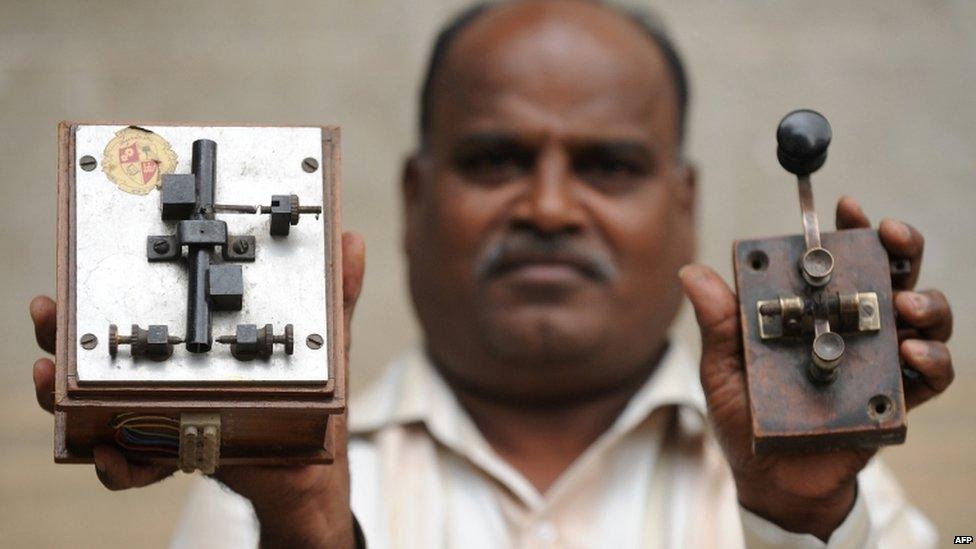
Telegram services opened in India in 1854, four years after the first electric telegraph line between Calcutta city and the suburb of Diamond Harbour.
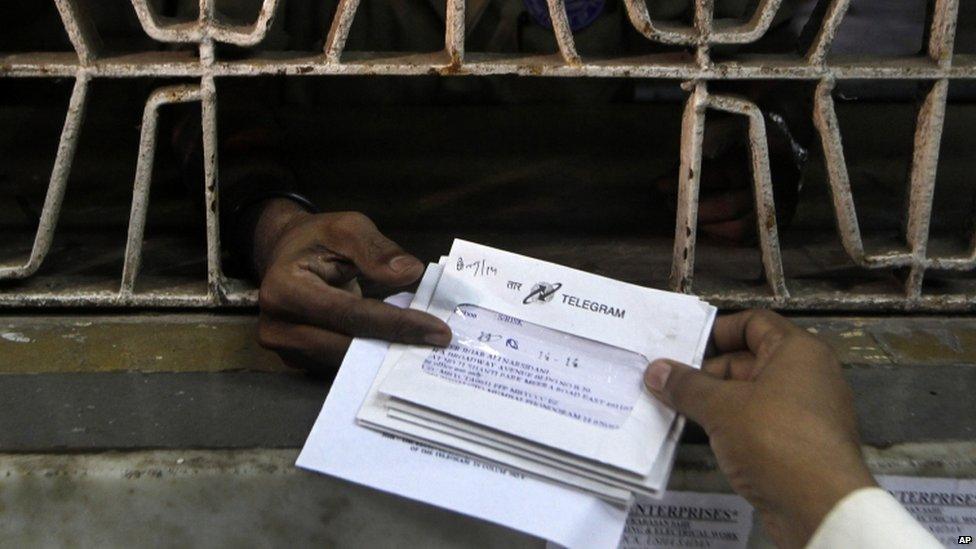
Officials plan to give a "ceremonial farewell" to the services next month by keeping the last telegram sent on 15 July in a museum.